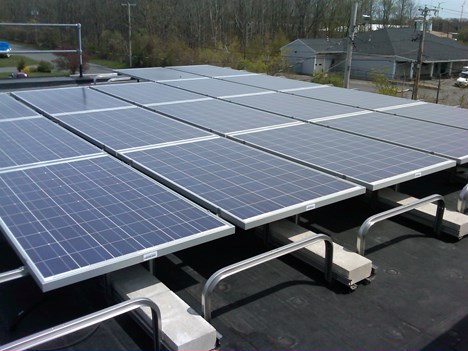When you decide to go solar, you spend a considerable amount of time researching solar panels. But, there is another part of the installation that is also important. We’re talking about the mounting process and the solar racking systems. Our clients usually ask us two main questions:
- Is the racking strong enough to hold the weight of the solar panels?
- Will the mounting process damage my roof?

Knowing the details of the mounting process can help you understand the dynamics of the installation better:
- The first step of the mounting process involves your solar installers marking the roof with chalk.
- Then they find the rafters and install the flashing under the shingles. After this, the lag bolt is drilled down through the roof and into the rafters.
- The clamps are then attached to the lag bolts.
- After this, they place the rails on the clamps and line them up.
- Finally, they place the modules on the racks using mid and end clamps and secure the modules in place to the rails.
Now that you’ve gotten the hang of how the solar panels are mounted on your roofs. Let’s walk you through some solar racking options:
Sloped Roof Mounting Systems
If you have an angled roof then there are three options available for mounting systems which include railed, rail-less and shared rail mounting systems. The mounting process for standard railed systems is explained above.
Rail-less systems are self-explanatory. Instead of the rails, the panels are attached to the same hardware the bolts and screws are attached to. Reductions in shipping costs and rail installation time are two main benefits of rail-less systems.

Shared rail systems involve taking two rows of panels attached to 4 rails and removing one rail, clamping the two rows of panels on a shared middle rail. This ensures that fewer roof penetrations are needed for installation.
Ballasted and Non Penetrating mounting systems are gaining more traction for solar roofs. In this case, the solar panel systems are draped over the peak of a roof. This distributes the weight of the system on both sides of the roof. However, ballasted systems cannot be installed on roofs in the northwestern regions due to tornado concerns.
Flat Roof Mounting Systems
Flat roof installations need less penetration in the roof and are done faster than sloped roof installations. Panels are usually installed at tilted angles of 5 or 15 degrees to limit shading. Ballasted mounting systems are used to mount solar panels onto the roof. The amount of ballast required depends on how much load the roof can take.
These mounting systems come in many varieties and the most popular are the aluminum and steel-based systems. In some cases, plastic and polymer based systems are also used.
So there you have it, We hope this makes the installation process and the material breakdown easier for you!



